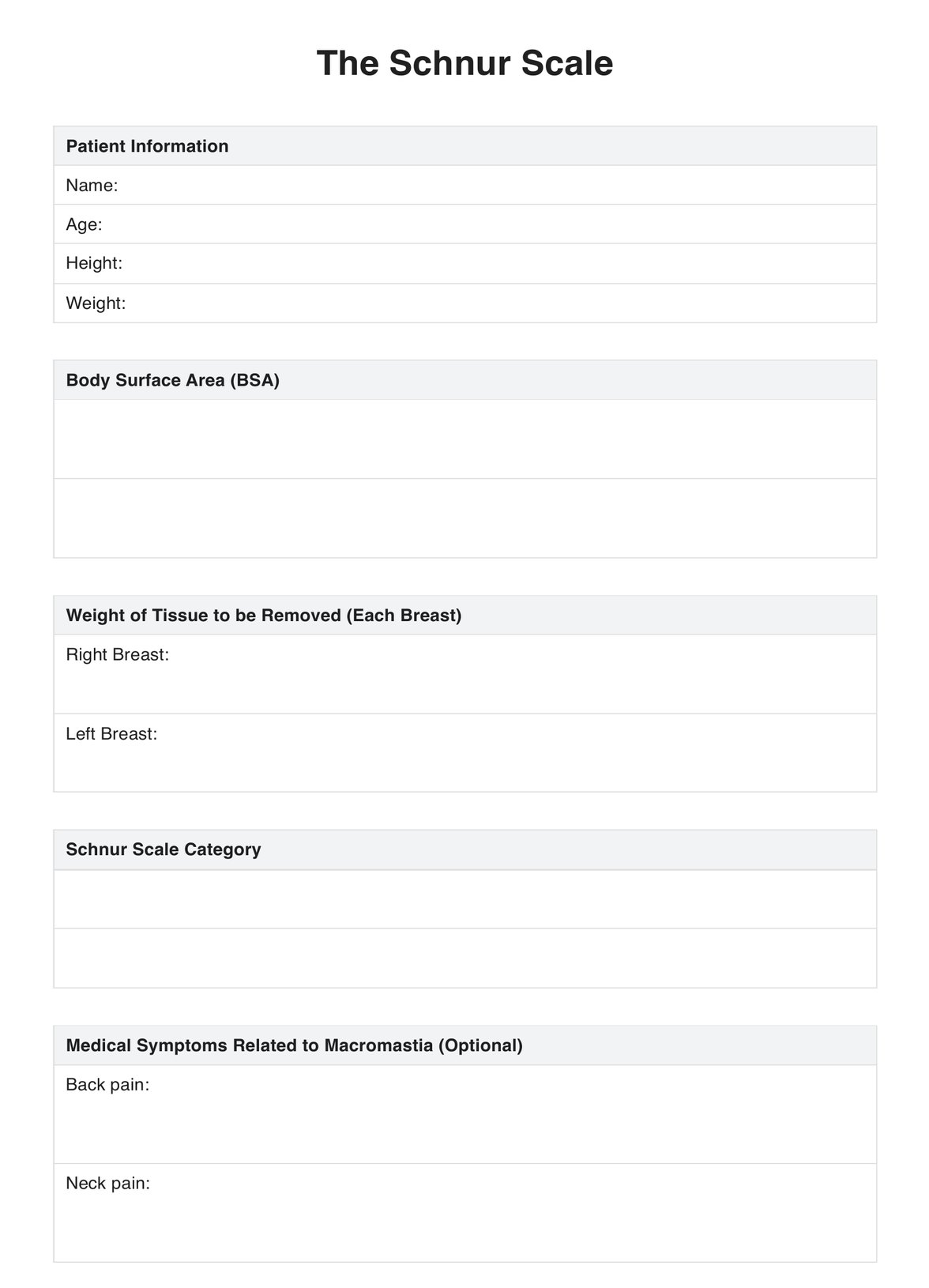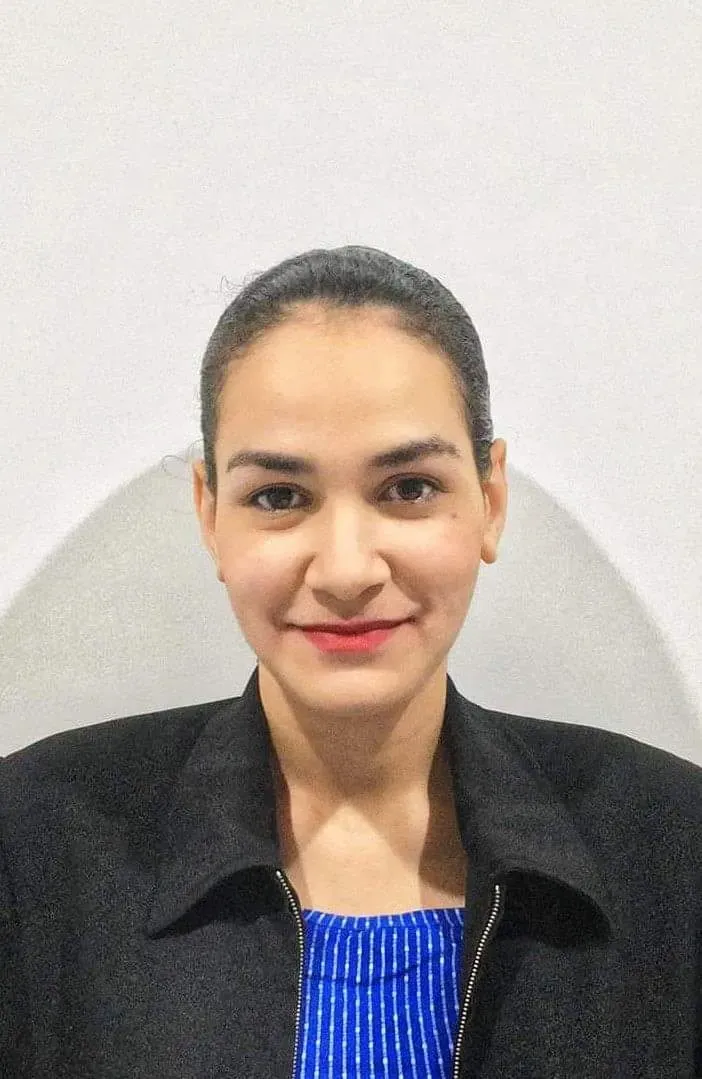Plastic surgeons and insurance companies typically use Schnur Scales to determine the medical necessity of breast reduction surgeries.

Schnur Scales
Explore the Schnur Scale, a widely used evaluation method for individuals considering breast reduction. Learn how it aids in improving posture and reducing pain.
Use Template
Schnur Scales Template
Commonly asked questions
Schnur Scales are used during the planning stage of breast reduction surgeries, particularly during the preauthorization process with insurance companies.
Schnur Scales relate the patient's Body Surface Area (BSA) with the amount of breast tissue to be removed. This helps determine whether the proposed surgery is medically necessary.
EHR and practice management software
Get started for free
*No credit card required
Free
$0/usd
Unlimited clients
Telehealth
1GB of storage
Client portal text
Automated billing and online payments











